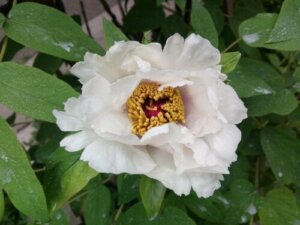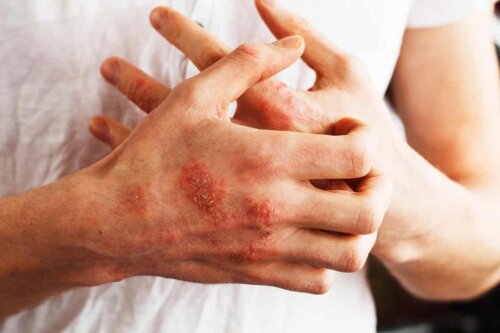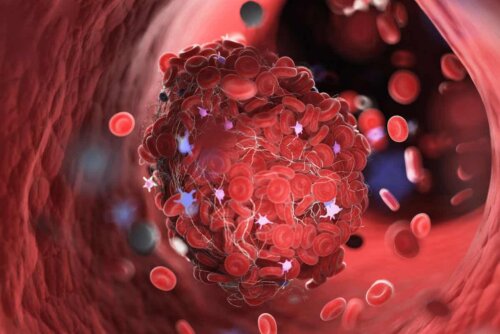White Peony Root: Benefits and Side Effects


Reviewed and approved by the pharmacist Franciele Rohor de Souza
White peony root comes from the plant with the scientific name Paeonia lactiflora Pall. It belongs to the peony (Paeoniaceae) family and is cultivated in East Asia, Europe, and North America. People also know it by “garden peony”, “Chinese peony” or “bai shao”.
According to historical data, traditional Chinese medicine has used dried peony roots for more than 1000 years. Particularly so as a complement in reducing inflammation, pain, and fever. But, what does the science say about it? What are the side effects? Below, we tell you all about it!
Benefits and uses of white peony
In China and other Asian countries, many people know of the medicinal uses of white peony root. Similarly, the supplements that come from it are available in North America, Europe, and several other places in the world. Many people also enjoy the flower itself for its aesthetic.
An article published in the International Journal of Molecular Sciences tells us that peony has important compounds with pharmacological action. Among these, the following stand out:
- Monoterpenes
- Volatile oil
- Triterpenes
- Tannins
- Stilbenes
- Flavonoids
- Polyphenols
However, there’s still no solid evidence about the benefits of white peony root in humans. Specialists conducted a large part of the studies on animals, and the results weren’t conclusive. But, scientists believe that the findings are promising for the development of future medication.
You may also be interested in: Marshmallow Root: Benefits and Side Effects
Immunomodulating effects
We can obtain a few known compounds from white peony root, such as “total peony glycosides”. Specialists have been studying these substances for their potential as anti-inflammatories. According to a review published in the Journal of Ethnopharmacology, these properties help to regulate the immune system.
With that in mind, many people believe that it has the ability to reduce symptoms of autoimmune disorders such as the following:
- Oral lichen planus
- Psoriasis
- Rheumatoid arthritis
- Sjögren syndrome
Of course, given the severity of these illnesses, peony root supplements shouldn’t be a first-line treatment. Also, it’s important to consult your doctor before using it as part of your treatment.

Anti-inflammatory activity
To summarize the above, total peony glycosides have anti-inflammatory potential. A study in Frontiers in Pharmacology suggests that these substances help to suppress inflammatory pathways that cause illnesses. This way, it reduces the risk of nephropathy, liver diseases, and arthritis, among others.
Blood flow
In Chinese medicine, people use white peony root as an anticoagulant. In fact, many people believe it helps to prevent thrombosis. Additionally, a study on animals published in Molecular Medicine Reports found that paeoniflorin (one of the glycosides in the plant) increases the action of the plasminogen activator urokinase.
This enzyme helps to resolve thrombosis problems naturally. The experts suggest that it inhibits clots forming. It can even contribute to dissolving those that already exist. Specialists noticed similar results in a review shared in Evidence-Based Complementary and Alternative Medicine.
Analgesic properties
Paeoniflorin, one of the main active components of this root, has a light analgesic effect on the body. A study on animals in Cellular Physiology and Biochemistry determined that the substance acts on the central nervous system and helps to reduce pain.
Mental health
Another use for white peony root is related to mental health. Traditionally, many have used it as an ally against symptoms of depression and anxiety. As a study published in BioMed Research International explains, this is because its extracts reduce the expression of the serotonin transporter.
In other words, it prevents this protein from inhibiting the effects of serotonin, a hormone that contributes to the feeling of well-being. For that reason, it has an anxiolytic and antidepressive effect.
In another study, the paeoniflorin in this root helped to increase the probiotics in the intestine. According to a review shared in the International Journal of Clinical Practice, this also helped to alleviate mood disorders.
Skin health
Anecdotal data claims that white peony root extracts are good to help prevent premature aging. Its followers suggest that it slows down the appearance of wrinkles, marks, and other imperfections that we associate with old age. However, this lacks evidence to support it.
However, a laboratory study published in the International Journal of Cosmetic Science highlights that paeoniflorin has depigmentation potential. It reduces melatonin and helps to reduce dark marks.
Other uses
Many of the benefits that we attribute to this root haven’t been studied. Popular literature mentions it, but there’s no evidence about its efficiency.
For that reason, when it comes to using supplements you should proceed with caution. The common uses of this root are in the following cases:
- Polycystic ovary syndrome
- Menstrual cramps
- Digestive disorders
- Excessive hair loss
- Excessive sweating
- Migraines
- Respiratory disorders
- Chronic fatigue syndrome (CFS)
- Mastalgia
Possible side effects of white peony root
The American corporation WebMD suggests that white peony root is safe for the most healthy people, providing they consume it in adequate quantities. Adults have been able to use it without any problems for up to 6 months.
Excessively consuming it is linked with the following side effects:
- Excessive bleeding
- Diarrhea
- Digestive issues
Due to the lack of evidence, we recommend that pregnant and breastfeeding women don’t use it. Its anticoagulant properties cause it to be counterproductive in people that are planning to have any kind of surgery. Similarly, it can be dangerous for those with bleeding disorders. For that reason, it’s necessary to consult your doctor before you start taking it.

You may also be interested in: Licorice Root: a Remedy to Soothe Your Stomach
Possible interactions with medication
This root and its derivatives slow the blood clotting process. For that reason, you shouldn’t combine it with anticoagulant or antiplatelet medication. This is because there’s a risk of bleeding or bruising.
Some of the drugs to consider are the following:
- Aspirin
- Clopidogrel (Plavix ®)
- Diclofenaco (Voltaren ®, Cataflam ®)
- Ibuprofeno (Advil ®, Motrin ®)
- Naproxeno (Anaprox ®, Naprosyn ®)
- Warfarin (Coumadin ®)
You should also avoid taking it with phenytoin because it reduces its efficiency. This is an anticonvulsant and you should take it in certain concentrations to ensure that it’s effective.
What presentations is white peony root available in?
White peony root extracts are available as capsules, powder, and tea. It’s important to mention that it isn’t regulated by the Food and Drug Administration (FDA), However, you can find it in herbalist stores, pharmacies, health stores, and traditional medicine pharmacies.
A safe dosage hasn’t yet been established and how much you should take will depend on factors like age, state of health, and purpose of the supplement. For that reason, you should follow the pharmacist or herbologist’s instructions, as well as what it says on the label. Of course, wherever possible, it’s always best to consult a doctor first.
All cited sources were thoroughly reviewed by our team to ensure their quality, reliability, currency, and validity. The bibliography of this article was considered reliable and of academic or scientific accuracy.
- Hong DY, Pan KY. Paeoniaceae. In: Wu ZY, Raven PH, editors. Flora of China. Vol. 6. Science Press and Missouri Botanic Garden Press; Beijing, China: 2001. pp. 127–132. [Google Scholar]
- Paeonia lactiflora. (n.d.). ScienceDirect. Retrieved on June 1, 2021 from https://www.sciencedirect.com/topics/pharmacology-toxicology-and-pharmaceutical-science/paeonia-lactiflora
- Zhou C, Zhang Y, Sheng Y, et al. Herbaceous peony (Paeonia lactiflora Pall.) as an alternative source of oleanolic and ursolic acids. Int J Mol Sci. 2011;12(1):655-667. Published 2011 Jan 18. doi:10.3390/ijms12010655
-
Jiang H, Li J, Wang L, Wang S, Nie X, Chen Y, Fu Q, Jiang M, Fu C, He Y. Total glucosides of paeony: A review of its phytochemistry, role in autoimmune diseases, and mechanisms of action. J Ethnopharmacol. 2020 Aug 10;258:112913. doi: 10.1016/j.jep.2020.112913. Epub 2020 May 1. PMID: 32371143.
- Tu, J., Guo, Y., Hong, W., Fang, Y., Han, D., Zhang, P., Wang, X., Körner, H., & Wei, W. (2019). The Regulatory Effects of Paeoniflorin and Its Derivative Paeoniflorin-6′-O-Benzene Sulfonate CP-25 on Inflammation and Immune Diseases. Frontiers in Pharmacology, 10. https://doi.org/10.3389/fphar.2019.00057
- Ye S, Mao B, Yang L, Fu W, Hou J. Thrombosis recanalization by paeoniflorin through the upregulation of urokinase‑type plasminogen activator via the MAPK signaling pathway. Mol Med Rep. 2016;13(6):4593-4598. doi:10.3892/mmr.2016.5146
-
Kim, K., & Park, K.-I. (2019). A Review of Antiplatelet Activity of Traditional Medicinal Herbs on Integrative Medicine Studies. Evidence-Based Complementary and Alternative Medicine, 2019, 1–18. https://doi.org/10.1155/2019/7125162
- Yu JB, Zhao ZX, Peng R, et al. Gut Microbiota-Based Pharmacokinetics and the Antidepressant Mechanism of Paeoniflorin. Front Pharmacol. 2019;10:268. Published 2019 Mar 20. doi:10.3389/fphar.2019.00268
- Clapp M, Aurora N, Herrera L, Bhatia M, Wilen E, Wakefield S. Gut microbiota’s effect on mental health: The gut-brain axis. Clin Pract. 2017;7(4):987. Published 2017 Sep 15. doi:10.4081/cp.2017.987
- Qiu, J., Chen, M., Liu, J., Huang, X., Chen, J., Zhou, L., Ma, J., Sextius, P., Pena, A.-M., Cai, Z., & Jeulin, S. (2016). The skin-depigmenting potential of Paeonia lactiflora root extract and paeoniflorin:in vitroevaluation using reconstructed pigmented human epidermis. International Journal of Cosmetic Science, 38(5), 444–451. https://doi.org/10.1111/ics.12309
This text is provided for informational purposes only and does not replace consultation with a professional. If in doubt, consult your specialist.








